Apr 18, 2025
Apr 18, 2025
Hindu Religion: Gods & Goddesses
Continued from Previous Page
Since early age, the Indian civilization did not follow the religion in its literal sense or traditional form, the way more recent Abrahamic religions of the world look at it. Historically, the indians called it “Sanatana Dharma”, a term originally derived from the ancient Sanskrit language, which carries an implied meaning of “Eternal Duty”. The word Dharma is derived from the Sanskrit root “dhri” with a literal meaning to sustain or carry as part of something, such as sweetness of sugar or heat of fire. Thus in essence, Sanatana is eternal and Dharma as righteous duty and action, which embodies both the material and spiritual vision and mission of human life. The material component of it is largely represented by the Varnashrama-dharma that defines the duties of the individuals according to their status or placement in society while the Sanatana-dharma refers to righteous duties and positive attributes) such as purity, Satya (truth), Ahimsa (non-violence), forbearance, self-restraints, penance, asceticism, generosity, and so on commensurate with the spiritual identity of the Atman (soul).
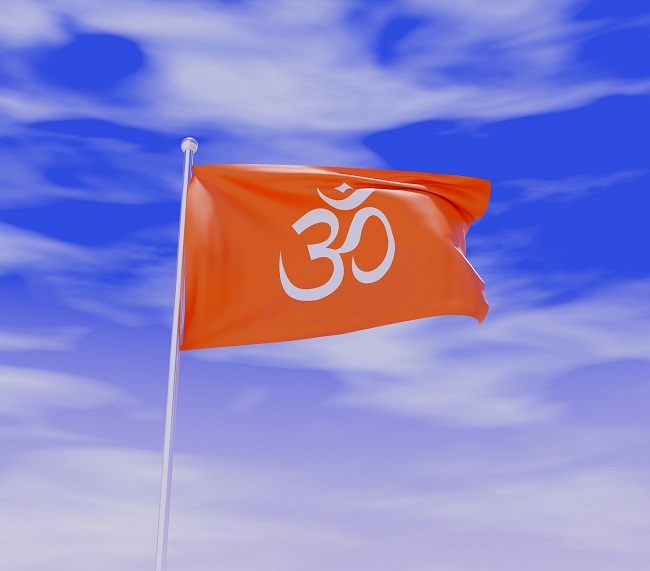
The chronological and genealogical history of the Sanatana Dharmees (Indians) has been briefly described in the previous parts. The Sanatana Dharma (Hinduism) laid a high emphasis on Purushartha (Object of human pursuit), which defines four objects or goals of human life viz. Dharma, Artha, Kama and Moksha since the Vedic age. In this order, Dharma got a precedence over the Artha and Kama, as the first and foremost requisite of all human beings in the cycle of pursuing the ultimate goal of human life i.e. Moksha (liberation). In empirical and metaphorical sense, Dharma is the binding force that regulates and upholds the entire creation in universe. It defines human roles and responsibilities, social and moral code and order, purpose and goals of life including the rewards and punishments commensurate with people's actions. Dharma is like the law of God which is sacred, inviolable, all-pervasive and at the same time responsible for universal order, regularity, harmony, control, predictability and accountability in the society. In essence, Dharma defined a code of conduct in day-to-day life striking a synergy between the mundane and spiritual life in the Indian civilizational context.
Dharma as Religion
Although the term “Sanatana Dharma” is still used by Hindus to denote their cultural and religious identity but now more commonly used terminology is Hinduism. The term Hindu and Hinduism appear to have been derived from the Sanskrit "Sindhu", an ancient name for the current age Indus River. Many medieval and modern historians believe that the terms Hindu and Hinduism were given by the Persians/Arabs, some others suggest that the term Hindu or Indu were originally used by the Greeks. However, some Indian scholars deny alien origin of these terms and claim that the term indeed appears in some of the ancient Hindu texts itself; hence it is of indigenous origin. It appear, the religion in its literal sense received more focus after the advent of two latter Abrahamic religions and Indians experiencing greater revival of their religious beliefs during the medieval period threatened by Islamic invaders and their religion. Also, the term Hinduism apparently came in common use during the early 19th century with increasing colonial hold in the Indian sub-continent and it gradually received general acceptance globally as well as among Hindus to denote it as their religion.
Thus the Sanatana Dharma, which comprehensively represented the Hindu way of life inclusive of its cultural and spiritual attributes, was largely replaced by the term Hinduism with Westerns and Islamists viewing it in much narrower sense akin to own religious beliefs. Unlike the Abrahamic religions and other later evolved indigenous religions in the Indian sub-continent such as Buddhism, Jainism or Sikhism, the Hinduism does not have any single founder and holy reference book or central doctrine. Instead, it represents a synthesis and hybrid of multiple cultural, religious and philosophical concepts and practices that originated, evolved and matured since the Vedic age. As the oldest surviving religion, the Hinduism is currently the third largest with over one billion adherents comprising of about 15 percent of the world’s population. Considering the numerous sects and denominations and liberty to choose, the Hinduism is a religion still more cultural than creedal.
The Sanatana Dharma aka Hinduism clearly followed its own material and spiritual course even during the ancient age when the most other civilizations such as Greeks, Romans, Egyptians, Persians, etc., pursued a religious polytheism. As against these lost civilizations, Hinduism traces its origin in monotheism since the Vedic period but owing to its diversified nature, philosophy and doctrines, it appeared to assume the characteristics and impression of a polytheistic religion though still retaining its ingrained philosophy of monotheism through monism. This is evident from the fact that the majority educated and aware Hindu adherents agree that multiple Hindu Gods are, in fact, manifested forms of the same Vedic Brahman, universal Ishvara or Parmeshwara. Thus the Hinduism (religious and cultural tradition) is a sum total synthesis of the material and spiritual wisdom and knowledge encompassing all aspects of human lives of which the west-defined religion is just one component.
In that sense, it is a kind of living idea that has grown, proliferated and improved with the time imbibing and assimilating every useful contemporary thought or practice for the mankind. Hinduism or Hindutva is the gist and articulation of the idea of continuing freedom of thought from which emerges the multifarious Hindu Principles, most of which have been explained at length separately in the author’s series named “Hindu, Hinduism and Hindustan” available on Boloji.com. Essentially, two quotes from the ancient Hindu texts summarize the crux of the philosophy around which Hindu religion is knitted and proliferated.
These ingrained philosophical great vakyas (statements) are:
1) Vasudhava Kutumbakam
(The entire world is one family.)
2) Ekam Sat Viprah Bahuda Vadanti
(The Universal Consciousness (Brahman or God) is the same, but different people call it by different names.)
The former statement is illustrated and self-validated by the fact that Hindus never invaded or forced people of other religions for submission or subordination to Hinduism neither through coercion nor evangelism while the latter suggests that the Hindu sages had learned the universal truth thousands of years ago. In the recent age, some activists representing particular socio-religious groups had moved Supreme Court of India alleging that the philosophy of Hinduism/Hindutva is detrimental for others. The apex judiciary in India in their December 1995 judgment, reiterated again in 2016 by a higher bench, ruled that Hindutva shall be understood as a way of life or a state of mind and is not to be equated with or understood as religious Hindu fundamentalism. It would be a fallacy and an error of law to proceed on the assumption that the use of words Hindutva or Hinduism per se depicted an attitude hostile to all persons practicing any religion other than the Hindu religion.
Polytheism or Monotheism
Owing to the plurality of the sects, denominations and deities, Hinduism is broadly considered as a polytheistic religion by the dominant and majoritarian Western outlook world-wide. Such an interpretation is based on the fact that the Sanatana Dharma permits worship of God in the form of multiple male and female gods and goddesses with different looks, attributes and functions although philosophically maintaining that they are manifestations of the same Supreme Soul or Universal Consciousness referred to as Brahman in Vedas, Upanishads and other Hindu scriptures. Brahman finds mention in several hymns of Rigveda and other Vedas, Whose attributes have been analyzed and explained at greater lengths in the Principal Upanishads. In short, the attributes of Brahman (Universal God) include as being original, absolute, eternal, incorporeal, indescribable, inexhaustible, omniscient, omnipresent, omnipotent, both transcendent and immanent, infinite in existence, source of all creation, without any beginning and end, and so on so forth. This Universal God is also addressed as Ishwara, Parmatma, Permeshwara, Bhagvana, and many other names in different Indian languages. The aforesaid definition and description of the Universal God as propounded in the Vedas and Upanishads appear nearly perfect and flawless.
In fact, much before the arrival of two dominant Abrahamic religions professing the existence of one God, the Sanatana Dharma had a mature understanding of the highest Universal Truth referred to as "Brahman" in Hindu scriptures and texts. According to the Hindu Darshana (philosophy), Brahman is neither personal to a particular human race nor a superhuman entity, and nor a gender specific male or female; instead, He is the most divine, subtle, invisible, conscious and one basis of all existence. Kena Upnishad so scholarly explained the Brahman where it narrates "Brahman is not what the eyes can see, but That whereby the eyes can see. Brahman is not what the mind can think but That whereby the mind can think". Thus Hinduism is essentially a monotheistic religion which gives an impression of being polytheistic due to its approach of tolerance and allowance of worship of God by the adherents in any desired form. The scriptures and ancient sages held that every divine entity in the universe is some aspect of Brahman Who shall be considered as the God of gods.
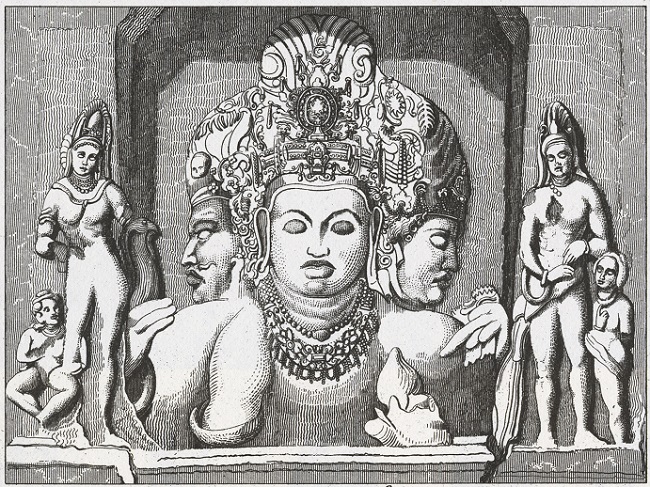
According to the Hindu scriptures, the three chief functions of the universal existence are creation, preservation and destruction. The last function is considered essential to eternally recreate, repeat and continue the cycle of existence. The Hindu philosophy holds that though metaphysically different deities appear to sustain these functions but in effect they are Brahman only in its highest respective attribute. Commensurate with the cycle of existence, the Hindu philosophy suggests that God (Brahman) has both Nirguna (unmanifested) and Saguna (manifested) aspects. While the unmanifested form of God exists as Universal Consciousness, the principal manifested forms exist as Trimurti (Triad) of Brahma, Vishnu and Shiva representing the three key functions of creation, preservation or sustenance and destruction or withdrawal respectively; similarly, other personified deities associated with different functions of relatively minor importance are also different aspects of the same Universal God.
Accordingly, Hindus have worshipped various deities i.e. gods and goddesses in various forms, aspects, manifestations, emanations, incarnations and projections of the same Universal God since the Vedic age. For illustration, the Vedic Sun god would spread light and warmth, the Agni and Varuna gods would be responsible for the fire and water, respectively. While there are such multiple gods with different assigned universal functions, there are almost same number of goddesses too which are equally revered by adherents of the Hindu religion. This flexible and liberal approach of Hinduism too has its origin in the same Hindu scriptures which emphasize the existence of only one Supreme Reality as Brahman. Among Hindu spiritual philosophies, the Advaiata Vedanta has found maximum acceptance which believes in non-dualism and that all Atman (souls) are one and the same across the space and time. In other words, the Atman is Brahman - the Brahman is Atman. Perhaps this is also the reason why scholars maintain that Hinduism is actually a journey of polytheism to monism via monotheism.
Gods and Goddesses
In Hinduism, the Vedas are considered immutable, supreme and mother of all authentic knowledge and traditions. The basic information about the deities i.e. Devas (gods and goddesses) is derived from the hymns of Vedas, more particularly of the Rig Veda which is also the precursor and mother of remaining three Vedas. Hinduism has undergone tremendous transformation during its long journey. While the Vedic gods (recognized as Deva and Devi) received significant offerings and recognition only though sacrificial offerings, the post-Vedic developments ushered in evolution of many principal traditions or sects and numerous sub-traditions along with manifested forms and idol worship. Notwithstanding the developments of different forms and modes of worship in various traditions, parts of the Vedic culture and religion have survived and still observed by adherents. Their combined strength makes Hinduism unique and significantly different from all other dogmatic and regimented religions of the world. Accordingly, the author has found it convenient and appropriate to deal with the gods and goddesses under two different sub-headings namely Gods of Vedic Era and Post-Vedic Era.
A - Gods of the Vedic Era
The Vedic people believed in one universal God i.e. Brahman and this belief was only more refined and strengthened during the post-Vedic age. Going by the more acceptable Advaita philosophy, Brahman is the only true existence and everything else in this cosmos is just transitory representing Maya or illusion. The scriptures have defined His Vibhutis (manifestations) and Amsas (aspects) as follows: Asat (Indeterminate), Sat (Determinate), Ishvara (Universal God), Hiranyagarbha (Cosmic Self), Viraj (Cosmic Body), Purusha (Cosmic Being), Kala (Time), Trimurti (Triad), Satchitananda (truth, consciousness, bliss), and Om. They even symbolized soul (Atman), space (Aakash) and food with Brahman, Who is ultimate recipient of all offerings because all deities are only His manifested forms. He is the transcendental and eternal entity that exists as the immanent and ingrained reality in the universe; therefore, He is also the highest achievable goal (Moksha) of human life.
However, the Vedic people worshipped several devas (gods) or deities mainly through sacrificial rituals, practice of austerities and meditation. They believed that these rituals and offerings are utmost essential because different devas are associated with their various needs as well as overall safety and well-being of Self and family. The information on these Vedic gods for invocation and making ritual offerings to them are also contained in the four Vedas. Conceptually, devas have immense powers but they do not have ability of self-procurement of food. On the other hand, humans have ability to create or make food and things of material comfort but they do not have miraculous powers of gods. Therefore, the inter-dependence between two entities was maintained by sticking to their respective duties (Dharma). The main gods of Vedic period are Indra, Varuna, Surya, Agni, Vishnu, Soma, Rudra and Yama. The maximum numbers of hymns in the Rig Veda are dedicated to Indra and Agni; the former was considered the most prominent representing the god of the thunder and storm while the latter served as an important link between men and devas by serving as a medium of all offerings.
The Vedic people worshipped a total of thirty-three natural deities (later erroneously interpreted as 33 crore by ignorant people) which broadly included eight Vasus, eleven Rudras, twelve Adityas, Indra and Prajapathi Brahma. These gods belong to different sphere in creation and their importance is adjudged through the cosmic function assigned and number of invocations made to them in the Vedas. Thus important Vedic Devas and Devis are: Indra, Varuna, Agni, Rudra, Mitra, Vayu, Surya, Vishnu, Savitur, Pusan, Usha, Soma, Asvins, Maruts, Visvadevas, Vasus, Adityas, Vashista, Brihaspathi, Bhaga, Rta, Rhibhus, Heaven, Earth, Kapinjala, Dadhikravan, Rati, Yama, Manyu, Purusha, Prajanya, Sarasvathi and Prajapati Brahma. Generally, male deity would have a corresponding female deity as consort. Aditi was a prominent Devi (goddess) who is considered to be the mother of devas as mentioned in several hymns. A few more prominent devas (Vedic gods) are briefly illustrated in the following paragraphs.
1. Indra:
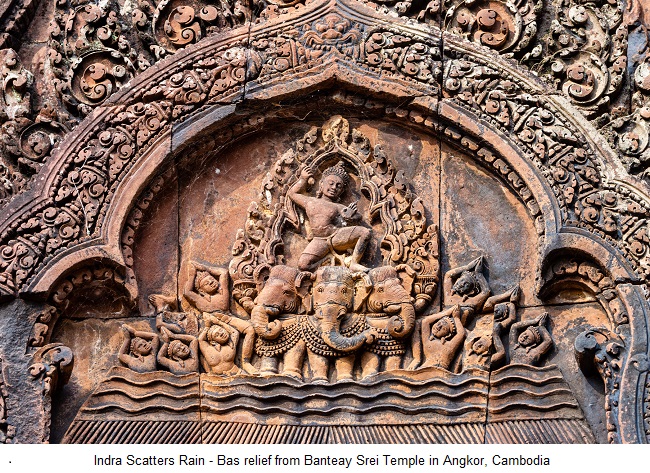
Among the Vedic gods, Indra is considered as the most popular and powerful deity as the king of heaven and associated with the sky, lightning, thunder, storm, weather, rains, flow of rivers and war. In the Rig Veda (Hymn 6.30), he is described as the most powerful and superior to other devas, who is strong willed, armed with a thunderbolt, and shown riding a chariot or divine elephant Airavata. In many subsequent Puranical texts, one could find numerous legends glorifying Indra’s life, Sachi as his consort, his conquest over asuras (demons), special weapon Vajra, and vehicle Airavata elephant, and so on. About his most glorifying legends is an episode of war with a powerful asura King Vritra, wherein he killed the asura with his celestial weapon Vajra to secure the prosperity and wellness of human beings. He is comparable with the gods such as Perun, Zeus or Jupiter of the contemporary South European civilizations of Greeks and Romans (now lost).
2. Varuna:
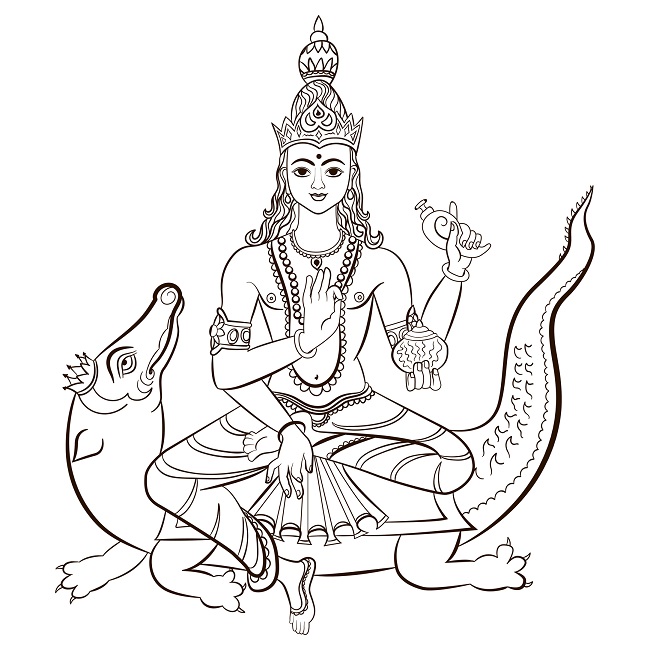
A Vedic deity that finds a mention in many hymns but more specifically in Rig Veda (Hymn 7.86). He is often ranked only next to Indra as the guardian of the laws of nature thereby ensuring a moral society. He is associated with the sky, ocean, justice and truth. In many Hindu Puranas, he is depicted as the god of oceans; his vehicle is a Makara (crocodile), favourite weapon a Pasha (noose, rope loop) and guardian of the Western direction. In certain puranic texts, he finds a mention as the father of the Vedic sage Vashistha. He is considered as an omnipresent, omnipotent and compassionate god who also causes rains to come down and the rivers to flow smoothly.
3. Agni:
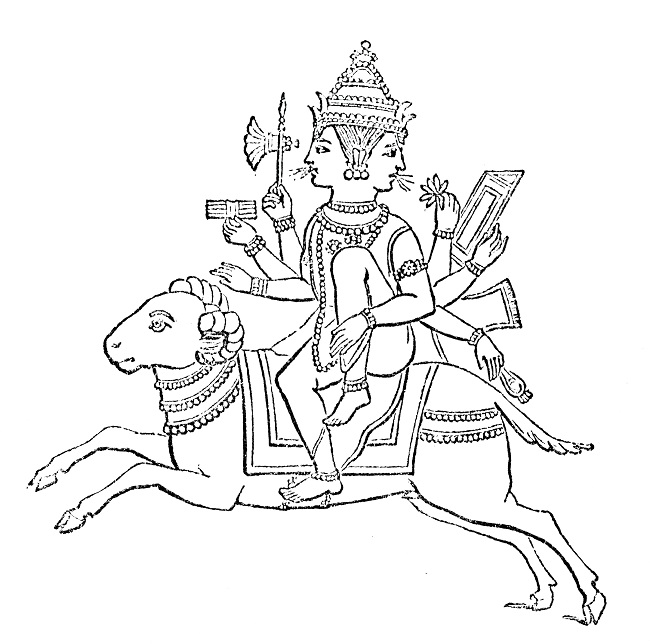
Agni is the fire deity of the Vedic era and a major and often-invoked god along with Indra and Soma. In the Hindu classical cosmology too, Agni finds a mention as one of the five inert elements, the other four being space (sky,), water, air and earth that together constitute the very basis of the material existence. In iconography, he is often depicted as bearded strong man with a large belly and golden brown hair, eyes and mustache matching with the color of fire, and considered as the guardian deity of southeast. Agni has a large numbers of the Vedic hymns dedicated to him (only next to Indra). He is intimately associated with sacrifice, or the hotar, who lavishes wealth and dispels the darkness in the universe. He serves as the medium between men and gods because all sacrifices are accepted by gods through him only.
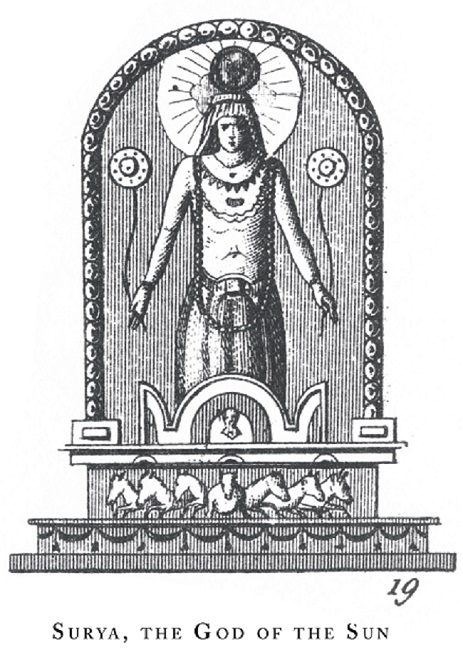 4. Surya:
4. Surya:
Surya or Sun is another major Vedic deity who is also considered as one of the five major deities of the later evolved Smarta tradition in the post-Vedic era. He is remembered with many other names such as Aditya, Vivasvan, Arka, Bhanu, Savitr, Pushan, Ravi, Martanda, Mitra, Bhaskara, Prabhakara, and Kathiravan. In iconography,
Surya is mostly depicted riding a chariot drawn by usually seven horses that also represent seven colours of the visible light and seven days of the week. He is the maker of the light, who illumines the radiant realm, who goes to the hosts of gods as well as to the world of mankind with his light. Like Varuna, Surya is ever watchful and is also provider of the good health to living beings. He is also acclaimed as the source of prana, who keeps the world alive with the radiance and vigour.
5. Vayu:
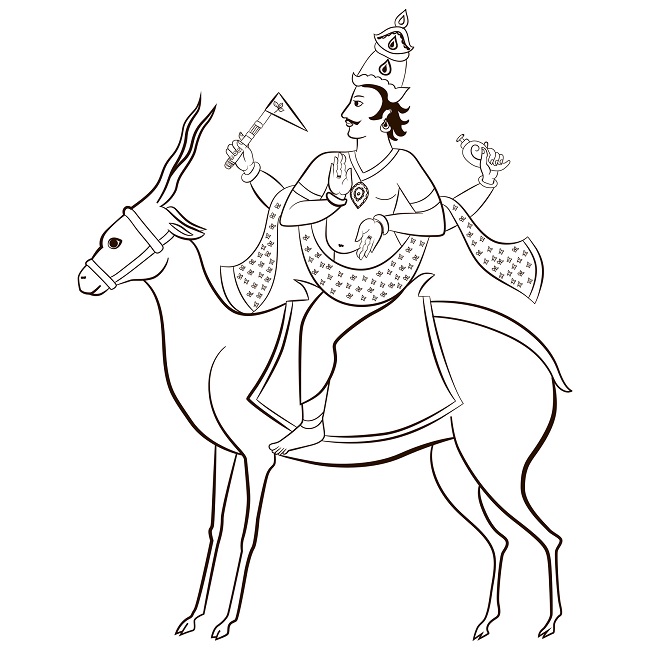
He is another important Vedic deity, who is associated with the wind as well as breath of all living beings. He is known by other common names of Anila, Vyana, Vata, Tanuna, Pavana and Prana. The Maruts are said to have been born out of his belly and he was among the first gods who received soma along with Indra during Vedic rituals. The Rig Veda described him as a beautiful deva, who is very favourably disposed towards Indra. In Vedic hymns, he is praised as an intelligence deity, who illuminates the earth and heaven and makes the dawn to shine and keep fresh. He is also considered owner of a swift mind, a thousand-eyes and the lord of thoughts.
Among other Vedic deities, Rudra represented the god of storms, lightening and the guardian of healing herbs. He was considered as a fierce god who could cause diseases but also a provider of medicines and healer too. Vishnu had many illuminating characteristics like Surya and was considered as a kind-hearted and protector deva. It was in the post-Vedic era that god Vishnu and Rudra received a lot attention and worship as part of Trimurti and chief deities of the Vaishnavism and Shavism traditions, respectively. Soma, also known as moon, was responsible for making the planet more livable by stabilizing the climate. Savitur is another solar deity who is adorable, mysterious and effulgent deva of mystic realms often representing the golden sun at the dawn with the main function of illuminating the world. Like Varuna, Mitra too was considered an upholder of laws and in Vedic era, both were often invoked together due to similar characteristics. Together Varuna and Mitra were considered as guardians of the universe stirring men into action and sustaining both earth and heaven.
Maruts were considered powerful and destructive storm devas, who could lash out the world from end to end, make the mountains rock and reel, or make the earth tremble, but they generally acted as the positive and benevolent forces that would give strength to the worshippers and work for the welfare of world despite their noisy ways. Pusan was considered as a pastoral deva who protected people from the ferocious animals and made their path pleasant and secured. Among many other functions, he was known to stir people’s thoughts, drive away the enemies and inspire the miserly men to contribute generously for the noble cause. The Ashvins were twin deities associated with healing and curative powers. Many Rig Vedic hymns illustrated them as the lords of hundreds of powers that would make the blind and lame to see and walk, the injured to recover fast from afflictions, and to bless men to produce offspring, and so on.
Yama was the god of the dead and the custodian of the fate of ancestors. Legend is that he taught young Nachiketa the secrets of Brahman, the sacrificial fire and immortality. A few goddesses too found mention in the Rig Veda such as Aditi was the mother goddess for many devas, Prithvi was the goddess of the earth; Usha was the goddess of dawn; Ratri was the spirit of the night; and Aranyani, the goddess of the forest. Visvadevas were none other than the popular devas of the Vedas collectively invoked through a common offering. The hymns of the Visvadevas contain the names of devas such as Indra, Agni, Varuna, Mitra, Bhaga, Daksa, Aditi, Aryaman, Soma, Asvins, Saraswathi, Vayu, Prithvi, Heaven, Pusan, Tarksya, Maruts, Rta and the dikpalas. Maruts and Aditayas were a group of devas signifying certain specific virtues collectively and individually and many of them have already been mentioned in the foregoing paragraphs. It was later in the post-Vedic period that gods Vishnu and Rudra along with Prajapati Brahma were glorified and worshiped as famous Trimurti representing the chief cosmic functions of creation, preservation and destruction.
B – Post-Vedic Gods and Goddesses
During the post-Vedic period, the Hinduism has undergone several changes in the nature and form of deities and mode of worship. Traditionally, the ancient scriptures and sages recognized the paths of Karmayoga, Jnanayoga and Bhaktiyoga for liberation from the vicious karmic cycle of birth-death-rebirth. The adherents of Sanatana Dharma (Hinduism) had liberty to pursue any of these paths for pursuing own spiritual accomplishment. Then Hinduism came under serious threats for survival initially from its own offshoot religion Buddhism before the Christian era and later from the Islamists and colonial powers during the last millennium. Among other things, these threats also served as catalyst for acceleration of the Bhakti movement among Hindus for own survival. These changes led to formation of several sects and denominations in various parts of the Indian sub-continent with focus on manifested forms of gods and goddesses and idol worship. Notwithstanding these changes, the Hindu culture and religion continued to show a strong influence of the teachings of the original scriptures i.e. the Vedas and Upanishads.
Important changes in post-Vedic era involve the evolution of four chief religious traditions namely Vaishnavism, Shaivism, Shaktism and Smartism, though still within the same orthodox fold of Sanatan Dharma yet as distinct entities. This period was also marked with the emphasis and emergence of Saguna (manifested) gods through idol worship among the Hindus. Another remarkable feature of the post-Vedic era was sustenance of the spirit of amicability and harmony between the orthodox and sectarian forms of worship. The above point could be illustrated through the theological conception of the Trimurti (Triad). While the Vedic Brahman (unmanifested) was considered the God of gods encompassing all three core functions of creation, preservation and withdrawal; in the post-Vedic Trimurti (manifested), Brahma, the creator is responsible for all creation; Vishnu, the preserver is responsible for the protection and sustenance; and Shiva, the withdrawer responsible for all destruction and withdrawal in the universe. Although metaphorically the three deities appear to be different but in reality each of them is Brahman only in their highest respective aspect and worshipped as such by their devotees.
Besides Trimurti, Hindus worship many other gods and goddesses. Every god and goddess has its own aspect, manifestation, emanation, incarnation and projections. Besides, there are many associated and attendant deities, and all this collectively make the Hindu philosophy so diverse and complex. According to traditional beliefs, the abode of deities is the upper straighta of the cosmos performing diverse functions for the wellness and prosperity of the world. For instance, the Sun god would spread light and warmth, the Agni and Varuna would be responsible for the fire and water respectively so vital for life. Several Hindu gods also carry a link and continuity from the Vedic era; thus many post-Vedic deities are in fact extension and evolution of the Vedic deities. While there are numerous gods with different assigned functions, there are almost same number of goddesses as consorts r even independent entity with specified role, which are equally revered by the Hindu devotees. Principal deity of the major traditions such as Vaishnavism, Shaivism and Shaktism remain the central godhead yet they commonly share mythology, ritual, theosophy, axiology and polycentrism. Then followers of Hindu sect like Smartism worship multiple principal deities for the realization of the goal of life. A few more important post-Vedic gods and goddesses are briefly outlined here.
1. Brahma:
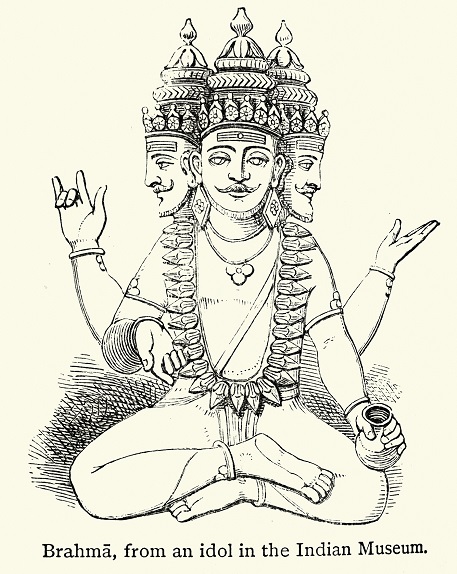
He is the creator god of Trimurti and symbol of the knowledge and wisdom in Hinduism. In iconology, he is depicted with four faces, each representing one of the four Vedas. His other names are Prajapati, Vedanatha (god of Vedas), Gyaneshwar (god of knowledge), Chaturmukha (four faced), Svayambhu (self-born), etc. His consort is Saraswati, the goddess of knowledge and wisdom. In many Hindu texts, particularly some Puranas, he is depicted sitting on a lotus emerging from the naval of god Vishnu. Despite his recognition as creator god, Brahma neither enjoys popular worship among the Hindus nor do many temples exist in his name. He is seldom worshiped as a primary deity and one famous temple existing in his name is at Pushkar, Rajasthan.
2. Vishnu:
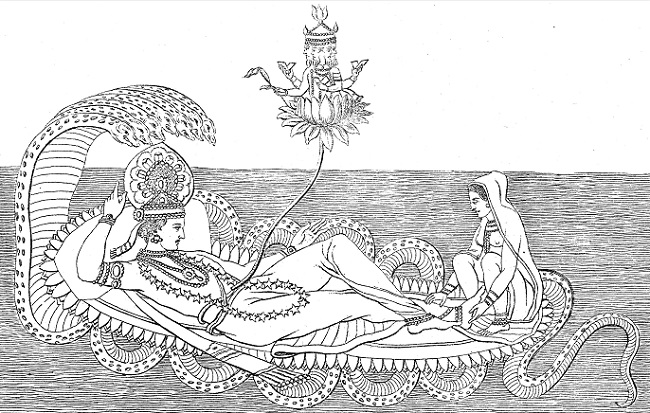
He is one of the principal deities of Trimurti who is considered as the Supreme Reality in the Vaishnavism tradition and Dvaita Vedanta philosophy. The Vaishnavas worship Vishnu as Ishvara or Bhagavan and also remember him as the formless Brahman. He is the preserver and protector god who is believed to have ten reincarnations (avataras) to protect the virtuous men from asuras and evil doers. His other common names are Narayana, Jagannath, Vasudeva, Vithoba, Hari, and so on. In iconography, he is depicted as reclining god accompanied with consort Lakshmi on the coils of the seven-headed divine serpent Sheshanag. In traditional attire, he is shown of dark complexion with four arms, holding a padma (lotus flower) in his lower left hand, gada (mace) in his lower right hand, Panchajanya shankha (conch) in his upper left hand and the Sudarshana Chakra in his upper right hand. Out of his various avataras, he is more popularly recognized and worshipped as Sri Ramchandra and Shree Krishna by the followers in the modern age. Among many Hindu texts, Srimad Bhagvat Purana and Sri Vishnu Purana are most authentic and elaborate treatise on him and his deeds.
3. Shiva:
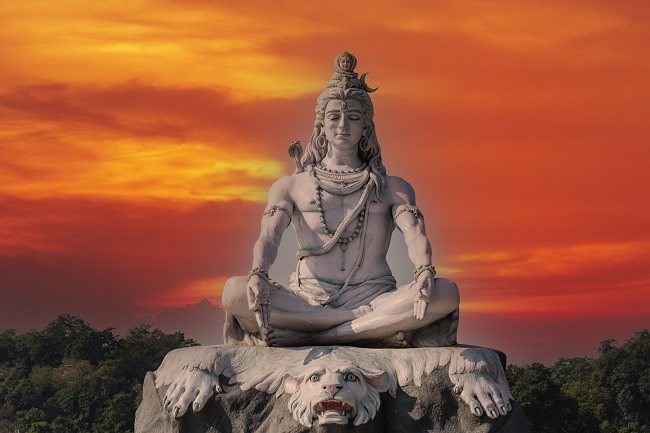
He is the third important god of Trimurti as also the principal deity of the Shaivism tradition, which is the second largest and widespread sect among Hindus following the Vaishnavas. In iconography, he is depicted in various forms, one as a Mahayogi sitting in the meditation posture along with consort Parvati at Mount Kailash, Himalayas; his consort Parvati is very often symbolized with feminine power of Durga or Devi. Some other conspicuous forms of Shiva are: Rudra characterized with a fierce and angry mood; Nataraja in dancing attire; and the Linga, the symbol of energy and potential of Shiva. Adherents of Shaivism consider Shiva as the Supreme deity and according to them, he performs five major functions of creation, preservation, dissolution, concealing grace and revealing grace. Unlike Vishnu, the concept of avatara is not well established with Shiva but Ardhnarishwara, Neelkantha and Rishi Durvasha are generally treated as his manifestations and Hayagreeva, Sharabha and Ruru as incarnations in animal forms. The Linga Purana and Shiva Purana are authentic and elaborate treatise on him.
4. Durga or Shakti:
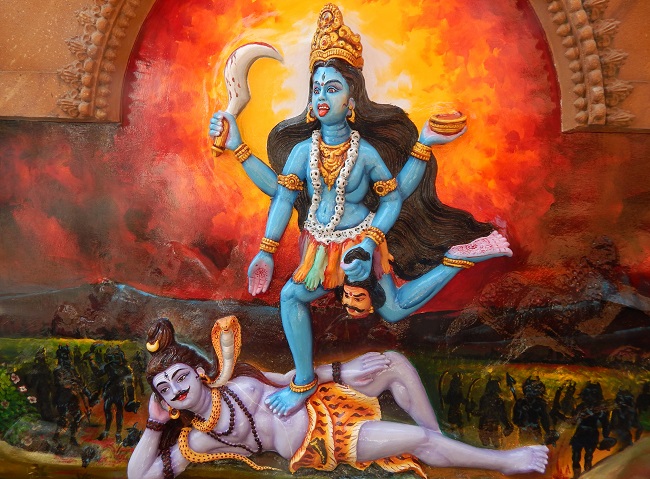
Goddess Durga is the principal deity of the Shaktism tradition, represents the feminine symbol of the Supreme Reality or Brahman. In Hindu texts, including many Puranas, she is also identified as Adi Parashakti and her followers call her with many names such as Shakti, Devi, Parvati, Amba, Jagdamba, Kali, and so on. In popular iconography, she is depicted as the Goddess with multiple arms riding a lion or tiger with each arm carrying a different weapon while slaying Mahishasura (buffalo demon). Many Hindus recognize her as the protective mother goddess in fierce form, who fights against the demonic, wrong-doers and evil forces that threaten Dharma, peace and prosperity of her subjects. Several Puranic texts are dedicated to her with Devi Mahatmya or Durga Saptashati being more prominent and popular.
5. Ganesha:
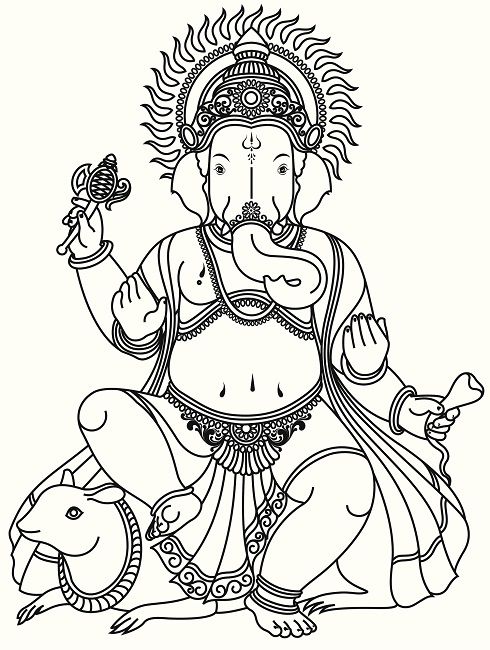
Among Saguna gods, Shiva is one who maintains a proper family and god Ganesha, an immensely popular deity among Hindus across the world, is his younger son, who is worshipped as the main deity in tmost parts of the Western and Southcentral India. He is known with many common names such as Ganapati, Vinayaka, Pillaiyar and Binayak. In iconography, he is depicted with an elephant head and prominent belly, a god very fond of Modakam (or Laddu). Ganesha is widely revered as the God of intellect and wisdom, remover of obstacles and the patron of arts and sciences. In Hindu mythology, he is identified as the restored son of Shiva and Parvati but he is a pan-Hindu god found in its various traditions. The principal Hindu texts on Ganesha include the Ganesha Purana, Mudgala Purana and Ganapati Atharvashirsa. Besides, Brahma Purana and Brahmanda Purana are two other Puranic encyclopedic texts dealing with Ganesha and his legends.
6. Hanuman:
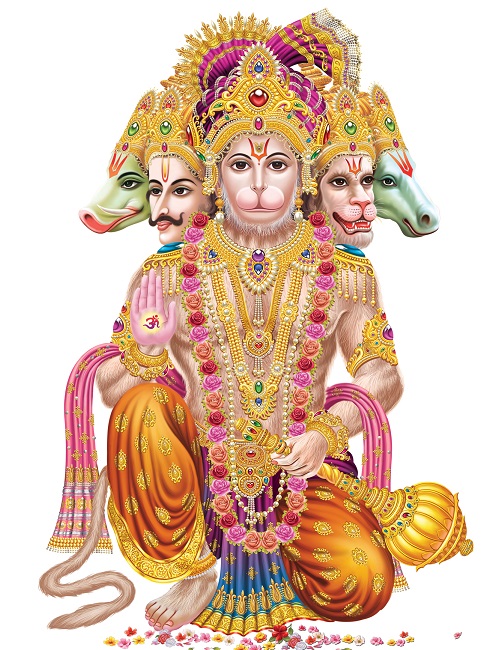
He is more popularly known as the monkey-god with a large following among the Hindu devotees, more particularly in the North India. People have great reverence, devotion and following to Hanuman, who is considered as an ardent devotee and associate of Sri Ramachandra and an important character in the all time epic Ramayana. He also finds a heroic reference at several places in the other great epic Mahabharata. It is common belief among the followers that God Hanuman removes all obstacles, difficulties and wards off the evil spirits and omen. In popular iconography, he is depicted with monkey like facial features and a tail with a heavy mace in one hand. He has several attributes and an important one being five-faced or Panchmukha which is a fierce form, each hanuman face representing a particular attribute.
7. Kartikeya:
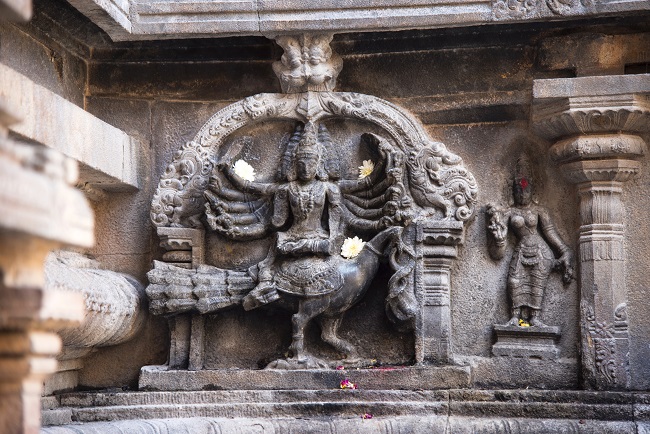
He is the elder son of Shiva and Parvati, who is considered as the Hindu god of war. According to a legend, he had sided with and led devas army to a convincing victory in an epic war with asuras during the ancient age. He is also known with common names of Murugan, Skanda, Mahasena, Kumara and Subrahmanya. In iconography, he is depicted as an ever-youthful man, riding or standing near an Indian peafowl Paravani, and carrying a vel or spear in hand. Kartikeya is generally shown with one head but his images and statues with six heads are also found. Kartikeya is predominantly popular and worshipped in the South India, treated as the god of fertility and his images are found in many medieval temples all over India, including the famous Ellora and Elephanta Caves.
8. Other Misc Deities:
Several gods have survived the Vedic era and are equally revered by Hindus till date. Surya is one such deity, who still has a large following among the Hindus. His worship is widespread and particular sect that follows him as the chief god is known as Suryaism or Saurism. Besides, some other gods of the Vedic era such as Indra, Agni, Yaruna, Yama, etc. still have a large following. With the growing number of sects and sub-sects within Hinduism, the number of male and female deities too has grown. Several gods and goddesses with local or regional influence and recognition are usually manifested forms of one the principal deities explained in the foregoing paragraphs. On social or religious occasion, Hindus seek blessings of local / regional gods and goddesses with reverential offerings. For illustration, they pray goddesses Shitala to protect against diseases or Mariyammai (in Tamil Nadu) to save children from smallpox. Similarly, Manasa Devi is believed to protect people from snakes. These local or regional devis are actually manifestations of Goddess Durga or Shakti. Besides, almost every Hindu village traditionally has its own Gramdevta and/or Gramdevi.
End Note
In Vedic time, various forces of nature were revered personifying as devas and devis after the rishis discovered their worth in sustaining and revitalizing the life of the human beings. Some of them such as the Adityas, Varuna, and Mitra were treated as the epitomes of the specialized knowledge, creative energy, exalted and magical powers (Siddhis). Sacrificial offerings evolved for these natural forces were most probably a way of acknowledging gratitude to these forces. The worship of sacrificial nature was carried out invoking relevant hymns from Vedas with fire as the chief medium of offerings, which in the post-Vedic age became more of ritual based although simultaneously retaining the use of sacred hymns and sacred fire. Owing to this reason, many Vedic deities increasingly lost their relevance later on while others gained more prominence and greater reverence of the devotees in due course. Notwithstanding all this, the bottom-line remained that multiple gods and goddesses in Hinduism are merely different manifestations of same Supreme Reality i.e. Brahman.
For illustration, Prajapati Brahma, Vishnu and Rudra did find mention in the Vedas but more attention was paid by the Vedic people on deities like Indra, Varuna, Agni, Surya, Vayu, and so on. However, in the post-Vedic era, and more specifically in the medieval period, Brahma, Vishnu and Rudra (Shiva) gained recognition as the Trimurti and three principal manifestations (Saguna Brahman) of the Supreme Reality (Nirguna Brahman). Besides, many more deities such as Shakti, Ganesha, Hanuman, etc. are specific deities of the post-Vedic era. However, deities such as Indra, Varuna, Agni, Surya, Vayu and Yama continued to get attention of the Hindus in the post Vedic era too. Indra continued to be remembered as the king of devas but people recognize him now more as the god of thunder and rains. Agni still remains the chief source of sacrifice through yajna and for many other sacred rituals. Many Hindu devotees religiously worship the rising Sun (Surya) as the first thing in the morning while Yama continues to be revered and feared as the god of dead.
Continued to Next Page
Images (c) istock.com
10-Sep-2022
More by : Dr. Jaipal Singh